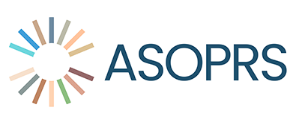With age may come wisdom, but it also brings an assortment of issues with your body: wrinkles, joint pain, age spots, even cataracts.
And, when you pass 40, usually presbyopia.
Presbyopia is a natural consequence of aging, this time of the eye. Presbyopia is not a disease; it is the loss of the eye’s ability to change its focus in able to see objects that are near. It generally starts to appear at the age of 40 in most people.
In your youth, the lens in your eye is soft and flexible; it changes shape easily, which is how you focus on objects both up close and far away. But, after you turn 40, the lens becomes less flexible, more rigid. It can’t change shape as easily as it did in your younger days, so it becomes much more difficult to see things at close range, such as when reading. Almost everyone develops presbyopia.
Presbyopia is often confused with farsightedness (hyperopia), but the two are different conditions. When the lens of the eye loses flexibility with age, that is presbyopia. When the natural shape of the eyeball (the eye is shorter than normal or has a cornea that is too flat) causes light rays to bend incorrectly once they enter the eye, that is hyperopia. The results of the two conditions are similar — inability to see up close without correction — but hyperopia can be present at birth, while presbyopia develops after 40. Hyperopia often has genetic tendencies, while presbyopia is common throughout the population.
If you’re over 40 you’re familiar with the symptoms of presbyopia. To read a menu, you have to hold it away at arm’s length. When you attempt to read something at a normal distance it is blurred. If you do close work, such as reading or computer work, you get headaches or eyestrain.
It’s easy to determine if you have presbyopia in a normal eye exam. A phoropter is used to measure the amount of refractive error you have and to choose the proper prescription to correct that error. If you’ve ever had an eye exam you know the phoropter, the instrument where the optometrist has you look through the eyepieces at an eye chart and constantly is changing the lenses on the front and asking if it improves or lessons your view.
Presbyopia cannot be cured, but it can be easily corrected. Most people simply opt for standard drugstore reading glasses, having a few pairs around the house wherever they may need to do some reading.






